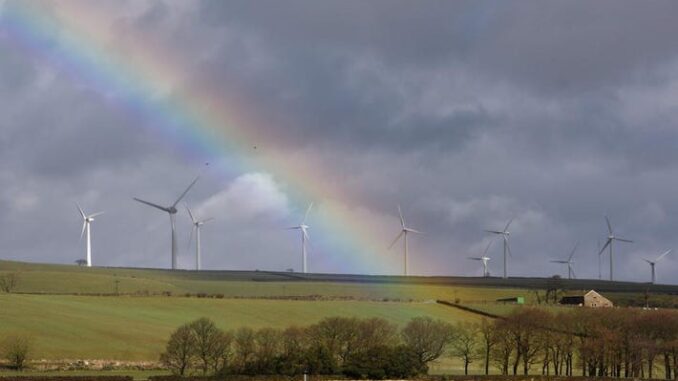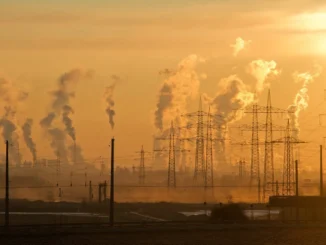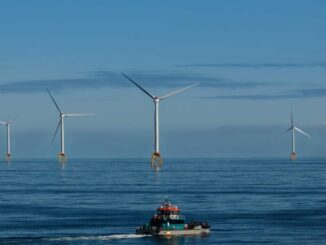
It’s an unprecedented and harsh winter for Europe as the continent faces an energy crisis amidst an economic crisis and a recovery from the Covid-19 pandemic. Russian gas supplies have been cut by over 80% this year, sending prices skyrocketing by as much as 15-fold pre-war prices. The impact on businesses and lives has been tremendous so far, risking a major recession in Europe, according to the IMF.
LNG, liquefied natural gas, has been the primary replacement for Russian gas, but the cost of LNG has more than doubled in 2022.
Wholesale electricity prices have followed suit, and the energy crisis was further exacerbated by Europe experiencing its worst drought in 500 years. River levels were so low that 1/5 of Europe’s hydropower generation was knocked out and some nuclear plants had to lower outputs to avoid overheating rivers by cooling water discharged by the plants.
Anthony Agnew, Managing Director at Green Deck, is a sustainable energy fund and project developer, working in wind, solar and battery early-stage projects in Western Europe and with renewable energy clients spanning the globe from Greece, the UK, Spain, Italy, Zimbabwe and Holland to the US and Latin America.
He says that despite the macroeconomic turbulence, this year has been pivotal for renewable energy; from new government policies to an acceleration of investment, technology and projects.
“While the initial invasion of Ukraine certainly caused a bit of a pause on things, two months later, people realised that actually, it’s going to drive up those power prices and certainly for the medium to short-term, those power prices are going to stay high – that’s the expectation for the next couple of years.
“Renewable energy and power generation is countercyclical, so it doesn’t go up and down as stocks do; we always need energy and energy demand is typically going up anyway. There’s now a greater demand and a greater return on investment in renewable energy power projects.
“It’s not a case of investor sentiment is quiet, renewables have been one of the highest performing sectors globally and it’s a part of the super cycle. All of the government policy points that are coming out are increasingly helping that.”
Agnew says that new government legislation enacted this year has significantly increased the impetus for long-planning for renewable power.
“If you look at the US’ anti-inflation bill, it’s all about sustainability. The impact that can have in the US is huge. So it’s really exciting to see these things come forward as a result of the world suffering and showing that we can address some of these issues.
“We’re certainly seeing on the project side, in delivering sustainable assets, huge influx and growth.
“And the COP agendas are furthering that. We’ve already seen New Zealand in 2018 banning all new offshore rights. We saw Quebec this year in April ban all new oil and gas licences, which for Canada, one of the top five oil and gas producers globally, is an incredible thing to state. That’s huge. This is the ball rolling, there’s the carrot and sticks and we’re seeing more and more of that coming,” says Agnew.
From his vantage point at the forefront of renewable energy development, he says that deployment rates are “quickly and continuously on the rise. So we’re seeing more people want to do renewables, in more markets, and more money coming into it – the whole thing is just growing and growing.”
He believes locations with high solar yield like southern Spain will see an upsurge in concentrated solar power, “because when you store heat in liquid salts, you can run it for an extra 4-8 hours and potentially almost get 24-hour power generation.”
Agnew believes that the have the technology to power 80% of our electricity needs with renewables, without baseload power. “You’ve got baseload power, which is something that generates power 24/7, like a nuclear power station, and then you’ve got intermittent power, like wind and solar, which is only going to create power when the wind blows and the sun shines, and then the batteries work to balance the load on those intermittent powers.
“I believe it’s absolutely possible to switch to running the world using fully sustainable sources. It’s just a question of building momentum and also building these large networks of people who come together to make it happen.
“The boulder is already running downhill. We just need more people to push the boulder and get obstacles out of the way. We already have the technologies we need to deliver.
“You always need support from the government to make it happen. But right now, you can build solar in the UK purely based on the current market pricing, and that’s before Ukraine happened. You can build these without any support and they make money, so it’s already happening, that ball is rolling. If it makes more sense to put solar on your house than not put solar on your house because you’re going to live in a house for six years, then suddenly the world gets covered in solar,” says Agnew.
“UBS, for example, are advising their private wealth clients that renewable energy is where you should invest not because you like sustainability, not because you believe in the environment, but because it’s outperforming everything else. And that’s the perfect news story.”



